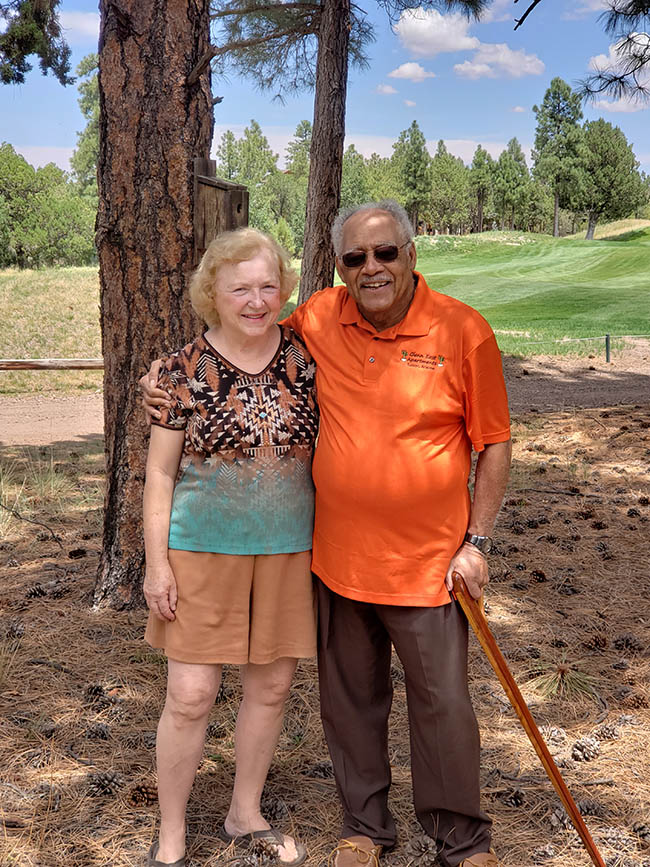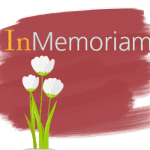Sharing life’s abundance

Growing up poor motivated Sanford Jones to pursue a physics degree. Now long retired, his appetite for cuisine has led to a major gift to Clark.
By Rhonda Morin
From his earliest memories as a young boy in Atlanta, Georgia, and growing up in Cleveland, Ohio, Sanford Jones wanted to be a scientist.
“I mixed things in my mom’s kitchen. Any household chemicals—vinegar, cleaning solutions,” he said.
Jones followed his passion all the way to a successful career at NASA. Now as a retired scientist, he’s focused on helping the current and future generations of students by supporting Clark College Foundation through a charitable remainder trust.
Challenger explosion
Before the Space Shuttle Challenger exploded on a sunny January day in 1986, it had flown nine successful missions. Next on the schedule was the launch of Space Shuttle Atlantis, equipped, like the Challenger, with an orbiter.
The man in charge of building the Atlantis orbiter remembers the sinking feeling in his stomach as he learned about the aircraft suddenly and violently blowing up, killing all seven crew members aboard.
“I heard about the explosion first when I was in a meeting and then watched the aftermath on television. There were a lot of changes that had to be made for years and it was a long time before the space shuttle got to launch again,” said Jones, 78.
In the 1980s, he oversaw the construction of an orbiter for the spacecraft Galileo at the Jet Propulsion Lab, a research, development and NASA field center in Pasadena, Calif. Orbiters are robotic crafts that explore outer space.
Jones’ orbiter was contained within the Space Shuttle Atlantis which was parked at the Kennedy Space Center’s launch pad in Florida undergoing final preparations. Then on January 28, 1986, the unthinkable happened: the Challenger exploded 73 seconds into its flight.
The disaster immediately shut down the shuttle program, including sidelining Jones’ orbiter, for two and a half years while investigations occurred.
Jones had already completed his work months before the Challenger accident, and had already moved on to other projects, including personal goals. But his connection to the tragic event would forever remain on his mind.
Young scientist

Carol Ewing and Sanford Jones. Photo provided by Sanford Jones.
Coupled with his fascination of science was his ferocious appetite for reading. Diving into adventure stories, old Greek classics, philosophy, scuba diving and science fiction was a regular habit.
“I read a book every two to three days for 60 years. I’d take the bus to the library and check out two or three books – that was the maximum you could take out. Then I’d go back the next day for a fresh stack of books. I was a stereotypical nerd,” he said.
Jones developed studious habits early on and “never got a B in my life.”
Growing up in a modest household, Jones came to realize he wanted more prosperity in his life. By studying hard, he knew he could become the scientist he dreamed of being.
“I grew up poor. I never remember a day going hungry, but it meant I didn’t have things,” he said. “When I decided to be a scientist, I knew to do that you had to go to college. I then focused on high school to earn my way into college.”
The hard work paid superb dividends. He received a partial scholarship to attend the prestigious Case Institute of Technology (now Case Western Reserve University) in Cleveland, Ohio, and graduated with a bachelor’s in physics in 1962. Education was already helping him fulfill his aspirations.
Eventually, he landed at NASA’s Lewis Research Center in Cleveland, working for a decade with electronic propulsions and building a tiny engine that turns a space craft. The work in Cleveland led him to the NASA field center in Pasadena.
A legacy begins
Life in California was productive, rewarding and opened up new experiences for Jones.
He married Carol Ewing, his second wife, in 1993. She was a chemist at Hughes Aircraft Company, an aerospace and defense contractor in El Segundo, Calif.
In addition to their demanding careers and participating in the raising of four children from Jones’ previous marriage, the couple dabbled in acquiring real estate.
“We traveled a lot for work and often bought real estate during those trips. We used to buy houses and fix them up, then rent, sell, refinance or buy other properties,” Jones said.
Upon retirement they moved north, finding land in Camas, Wash., where they built a dream home, and also purchased a second home in Arizona. Over time, they came to own more than 100 units in the Portland Metro area, Salem, Beaverton and Sandy, while running a property management business. The couple also own an ARCO gas station in Sandy, Ore., and a Vancouver office building.
As members of the Southwest Washington community, Jones and Ewing have been involved in a variety of activities and associations, and started their own group—the Wine and Food Society of Clark County.
“I collect wines and scotch and Carol and I like good food. So I founded the Wine and Food Society with business partner Dan Foster in 2006,” said Jones of the nonprofit that promotes wine and cuisine education and research in the region.
It was through this charity that Jones connected—and became a major financial contributor—to Clark College.
“Carol and I had been familiar with Clark for some time. We were season ticket holders for Clark’s Theatre performances. I was interested in expanding my support through the Wine and Food Society, so Russell Brent (a former Clark College Foundation Board of Directors member) introduced me to (Clark president) Bob Knight,” Jones said.
Support Clark, gain tax-free assetsSanford Jones and Carol Ewing asked Clark College Foundation to work with a local attorney to set up a charitable remainder trust (CRT). As a result, the couple will receive a large income tax charitable deduction in 2018 and more in future years. Here’s how it works:
Learn more by contacting Vivian Manning, CFRE |
The results of that connection benefit Clark students.
The couple set up a charitable remainder trust (CRT) with Clark College Foundation that will be funded, over time, from the sale of their real estate. Charitable remainder trusts allow individuals to give to charity, while saving taxes (see sidebar).
For Jones and Ewing, a charitable remainder trust makes sense because they can provide empowerment through education, giving others opportunities for success like they have had in their lives. Given the couple’s interest in food and wine they are particularly enamored with Clark’s Cuisine and Professional Baking programs.
“We like to support local enterprises and Clark is a local institution. It is the best opportunity for increasing the number and quality of culinary students in Clark County.”
In addition to the CRT, the couple have also supported scholarships since 2007. The Wine and Food Society of Clark County provided a $10,000 gift at the opening of the Tod and Maxine McClaskey Culinary Institute during a ribbon-cutting event on November 28, 2017.
Jones was so excited about the opening of the culinary institute that fall day that he provided an extra $5,000 personal gift for scholarships.
“Our contributions are about helping support the students in culinary—the chefs yes, but also all the phases of it. Being a good cook is not enough; you have to have business sense,” he said.
Photo above: The backyard view of the Arizona home of Sanford Jones and Carol Ewing. Photo by Jon Shroyer.
This story was undated on April 30, 2019.



